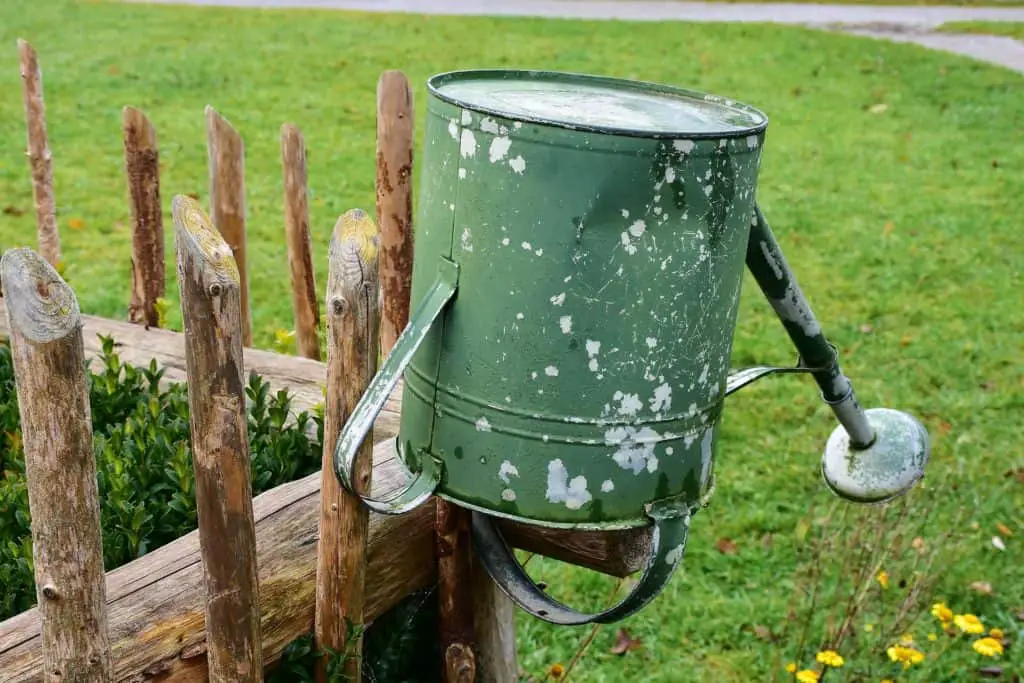
If you have considered starting a vegetable garden of your own and selected tomato plants or already have some in your garden, you would have heard the terms’ tomato stakes’ or ‘tomato cages.’ Are stakes and cages significant for the growth of your tomato plants? Do they make a difference to product yield? Can you leave them to grow and hope for the best?
Most varieties of tomatoes do need support as their stems are unable to hold up the fruit. The use of tomato cages, stakes, or growing directly from the ground depends on the variety of tomato plants used. If grown directly on the ground, your tomato plant will be at risk for diseases and pests.
Read further, if you are looking to add a tomato crop to your garden or looking to troubleshoot your underperforming tomato plant. It is essential to know what varieties of tomatoes need support and the benefits of using tomato stakes or cages. We will also discuss if you can grow tomatoes without tomato cages or stakes and when to use tomato stakes or cages.
Can You Grow Tomatoes Without Stakes or Cages?
You can grow tomatoes without stakes or cages; in fact, you may find that your tomato plant will give you a higher yield than staked and caged tomatoes. Tomatoes grown unsupported directly on the ground will need a lot of space to spread as their vines are unable to hold up the weight of the fruit. Smaller tomato varieties like cherry tomato, plum tomato, Ferline, and Felicia will be more suitable for this method of growing.
Tomatoes allowed to sprawl on the ground require very little maintenance. It is vital to make sure that any of the fruits on the tomato plant don’t directly encounter the soil, as this provides pests an opportunity to damage your tomatoes, mildew and rot from the wet ground to damage your stems and vines.
Should I stake or cage my tomato plants?
Tomato stakes and cages are very handy to use as the main stem of the tomato plant of
some varieties can grow 7 feet high and are unable to support the weight of the
fruit that grows. Most varieties of tomato plants need some form of support to
ensure that the stem does not break. Using tomato stakes or cages also ensures that your tomato plants are off the ground, away from pests like slugs and others that eat the leaves and fruit.
Tomato plants grown directly on the ground are susceptible to soil-borne diseases as
they directly contact the soil. Mildew and rot are also issues when the fruit and plant sit in water when it rains or is watered. Diseases affecting your tomato plants are also better prevented as air can circulate through the plant’s foliage.
Plant care is more straightforward for supported tomato plants, as the fruits, leaves, and vines are easier to access when needing to prune, harvest fruit, or get rid of any pests.
Tomato stakes are not ideal for larger varieties of tomato plants; they cannot be secured to the stake and may easily be damaged in poor weather. The main stem and vines need time to attach themselves securely around the stake when using stakes. The plant and fruit are also at risk of being sunscalded, as there is less foliage coverage. Tomato plants secured by stakes need continuous pruning to ensure the plant is off the ground and not too heavy for the stake.
What Are Tomato Stakes?
Tomato stakes are single posts made of plastic, wood, or metal. These posts are placed in the ground next to your tomato plant. As the plant grows, the main stem (center of the plant) is supported. The plant is secured with plant ties, string, or tape.
Tomato stakes are easy and quick to install; they take up less space in your garden as the tomato plant grows upright with little outward branching. Taking care of pruning your tomato plant is more accessible with the ease of access.
What Are Tomato Cages?
Tomato cages are made of metal or wood and vary significantly in size and shape. The significant difference between stakes and cages is the stability of the cage. Round and cuboid-shaped tomato cages provide support to the tomato plant’s main stem and vines.
As tomato cages support the whole tomato plant, pruning may not be required. The density of the leaves that grow in a tomato cage protects the main stem and fruit from sunscald and helps the soil maintain moisture. Tomato cages are more durable than stakes and can be reused for multiple seasons.
Wider tomato cages can take up a lot of space you may not have; the tomato plant can outgrow the cage, resulting in the tomato plant falling over and being damaged. Pest control is a little more complicated, as depending on how wide your cage is, there can be areas of the plant that you can’t reach to remove pests. Tomato cages can be very costly, especially the bigger and more heavy-duty you get. These cages do, however, last up to seven seasons.
Caging, Staking, and directly from the ground: Which method is better?
The best method depends on what variety of tomato you choose. Tomatoes are divided into indeterminate and determinate varieties.
Indeterminate varieties of tomatoes grow throughout the season and can reach over 10-feet tall. These tomatoes will continue to produce fruit throughout their lifespan until the growing conditions no longer support fruit production. These tomato plants will shoot their vines and leaves in all directions, making tomato cages the more suitable option for indeterminate varieties. Some varieties of indeterminate tomatoes include Brandywine tomatoes and heirloom varieties.
Determinate varieties of tomatoes only grow to a set height, which is often not very tall, and the harvest of ripened fruit is in a single period (over 1-2 weeks). These tomatoes are best grown using a stake as they stop growing at a certain height, or they can be grown directly from the ground. Some determinate varieties of tomatoes include Roma paste tomatoes, Italian Roma bush tomatoes, and cherry tomatoes types.
Growing your tomato varieties directly from the ground is the cheapest option, as you do not need to purchase any additional support structures. Your fruit yield may be more than the stake or cage method as no pruning is required, and the vines can spread over a greater surface area. The direct from the ground method may not be suitable for gardens or spaces with little surface area.
Conclusion
Tomato plants really don’t need cages or stakes to grow and produce fruit; if you pay careful attention to pests, make sure the plant and fruit are in standing water and do not directly touch the soil; you will end up with a large yield. Growing tomatoes straight from the ground can prove hassle-free and cheaper than using a supported growing method.
Both tomato stakes and cages provide adequate support to multiple varieties of tomatoes, as well as decreasing the risk of disease, and pests, ensuring that you are more likely to see good produce come harvest time.
Ultimately there is no single way to grow tomatoes or a superior method over another. How you choose to grow your tomatoes is up to the variety of plants you select, how much space in your garden you have, how much money you want to spend, and how much pruning you want to perform.

